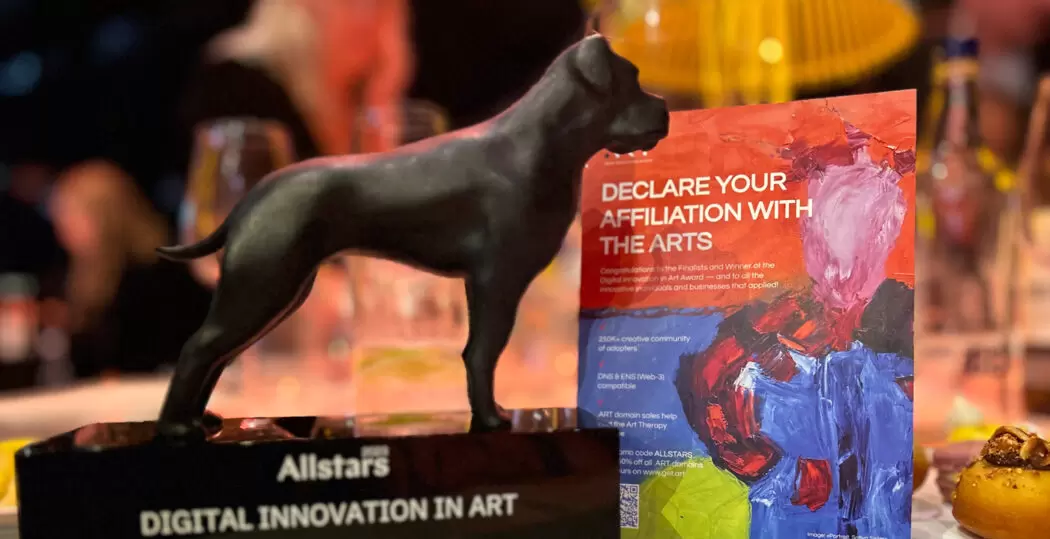Adopter stories: “We are cosmic, we are locals”
With Ars Electronica starting in just a few days, .ART talks to Vicente Matallana, one of the key international players in New Media Art. Vicente is the director of LaAgencia, an independent New Media Art company created in Madrid in 1998, thus being one of the trailblazers in the field. He is also Director of the BEEP New Media Art Collection, Member of the advisory board of Kurator and ArtFutura, and a member of the promoter group of the New Art Foundation.


Vicente, you are one of the key players of New Media Art for more than 20 years and a specialist in media art history. You have seen numerous changes in this field. What were the key events?
Absolutely the most influential thing has been the emergence of the personal computer and the Internet, not only as a tool for artistic creation, but as a tool to connect people with similar interests and ambitions. The early emergence of different online networks like Nettime (1995), Rhizome (1996), enabled people from all around the world to communicate in real-time. It was like a bomb, but the most incredible thing is that the creative group Hell.com was created in 1994, while HTML is from 1993. This capability to communicate was the revolution.
The New Media Art sector is continuously evolving. What are its current dynamics?
The theme of Ars Electronica perfectly reflects the middle life crisis of the technological revolution. We thought that people would collapse the Wikipedia servers, but people just want Facebook… For me the most important and urgent concern is the ecological side of it all, and I think that in some way all the work has some interpretation related to us as social beings interacting with the planet. Sustainability is a concept related to all fields, even how much data trash we are creating.
We all know how Internet caused the appearance of the whole post-internet movement in art. How will new technologies, including neurointerface, affect contemporary art?
I studied cognitive psychology and even while it is amazing what we can achieve with something as simple as a neurostimulator, there are a lot of ethical questions around. However, we are the problem – not the machines. This year we, the Beep Electronic Art Collection, are presenting different works at ArsElectronica that point to our relationship with the environment, even with ourselves, as the Wall of Gazes from Mariano Sardón and Mariano Sigman, or with our other selves the Aurelia 1 +Hz / proto viva generator from Robertina Šebjanič, Luci from José Manuel Berenguer, that bring us to a deep study of the collective intelligence of the fireflies, and the poetical cosmic view of Eclipse II from Félicie d’Estienne d’Orves. We are cosmic, we are locals, and in this socio-ecological proposal we couldn’t be complete without a reflection of our interaction with our closer environment, our production program with Hangar in Barcelona. Our goal is bringing to art a social and ecological thinking firmly grounded in scientific knowledge that is achieved by lateral thinking.
For us to collect isn’t just to buy and keep. It’s something active, a process in which you have to work with all the different agents. All of us have the responsibility of creating a legacy for the future generations.
What, in your opinion, is the main issue that is currently limiting the expansion of New Media Art in the art market?
Well, In Ars Electronica we will have a panel directed by Jens Hauser about the problems of preserving bio-art. Obviously it’s challenging… but on the other hand is not only New Media Art that is facing limits of expansion. Even when we can’t deny the important role of the art fairs in the development of the market, actually the strong dependence of the market on the art fairs presents a practical problem. There is a kind of art that can’t be presented in an art fair because of the time and space limitations. But this is affecting all art, not only New Media Art.

The challenges of media art on the art market – Vicente Matallana knows the answers.
You are the Project Director at the ArtFutura festival. What is the focus and activities of the festival?
ArtFutura has been presenting the most incredible digital creations for the last 30 years and I have to say that in the early ‘90s it influenced a whole generation in Spain, introducing us to a whole other world. It was natural in this digital era that we were prophets, spreading the program and creating a multi-site festival, from Shanghai to Aarhus, Buenos Aires, London, Dakar, Barcelona… right now we present the festival every year in more than 20 different cities.
What about LaAgencia?
Our statement for the last 20 years has been to respond to the new structural needs required by the incorporation of new technologies in art. LaAgencia is engaged in programs and projects focused on new media art as an alternative paradigm of research and knowledge. We are the technical guys who work on the structural problems, finding solutions to hold the future, I guess.
And during these 20 years we have worked and collaborated with all the main institutions worldwide, with long term collaborations as with ARCO art fair, with whom we developed the ARCO-BEEP Electronic Art Award that is the genesis of the Beep Electronic art collection. It’s impossible to overstate the importance of the support of the different directors of ARCO to New Media Art. In the late 90s when we started to work with Rosina Gómez-Baeza, we didn’t have a clear idea how to do it, but we did it!

“Try Not To Think So Much” by Eugenio Ampudia, ARCO 2018
How .ART Domains Are Taking Artists Online Read More How to register a business email on .ART Read More Portfolio on .ART: How to showcase your creative work in 4 simple steps Read More
What is so spacial about the Beep Electronic Art Collection?
The collection started 15 years ago within ARCO and the New Media Art section that was coordinated by us. This long-term collaboration gave us a privileged point of view of the challenge faced by the market. We know until which point the market has limitations that we try to cover with our research and production programs, producing projects that aren’t affordable to the galleries. For us to collect isn’t just to buy and keep, it’s something active, it’s a process in which you have to work with all the different agents, because all of us have the responsibility of creating a legacy, as my friend Jens says, for the future generations.
You have recently switched the online presence of LaAgencia to a .ART domain address. Why?
It seemed that we should grow, and our incredible sense of humour wasn’t reflected by the LaAgencia.org domain. .ART allows us to participate in a community, and for us, that’s the most important thing. We started in the early 90s with communities such as Rhizome or Nettime, we are community animals that believe in its benefits.
Also published on Medium.





